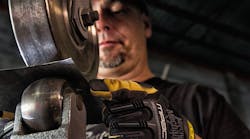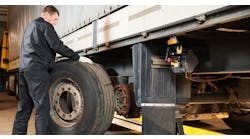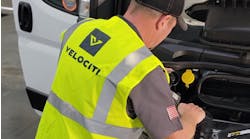Chances are, some of your technicians have experienced a minor hand injury at one point or another on the job. Some may say it is just part of the job, while others will dive into a tale of survival of how they almost lost a finger – and have the scars to prove it.
Whether it’s a small cut, laceration or even an impact injury, all can be prevented with the proper set of work gloves. For your technicians, it means less worry about their hands and more focus on performing the job. For you, as a manager, it means less downtime and medical costs.
It has been estimated that these types of injuries amount to hundreds of millions of dollars per year in lost production time, medical expenses and workers’ compensation. According to the latest data from the National Safety Council (NSC), the average hand injury costs $21,918 – indemnity plus medical expenses.
Second to back injuries, the most recent report from the Bureau of Labor Statistics states 25.3 percent of all work related injuries resulting in days away from work, were hand related.
IT MAKES SENSE
Unlike other industries, gloves aren’t mandatory in shops around the country. But it’s safe to say that wearing the proper hand protection for vehicle maintenance can drastically reduce the risk of hand injuries on the job. However, worker safety is more than just putting on a pair of gloves.
NSC statistics show that 70 percent of workers who experienced a hand injury on the job were not wearing gloves. The remaining 30 percent of injuries were due to inadequate, damaged or improper use for the type of hazard present.
HUGE STRIDES
Many technicians are stuck in their old ways and only remember the gloves of the past – bulky and cumbersome. Over the past two decades, glove manufacturers have made huge strides, not only in protective features, but also in anatomical correctness.
The focus on anatomical design ensures a snug-fit for better control and overall dexterity when working. With that focus came tapered stretch side panels which has greatly improved the gloves’ fit between the fingers.
Fit, feel and functionality are critical elements for glove makers. Category leaders, such as Mechanix Wear, work with a variety of fabrics and protective materials to improve durability and performance compared to traditional work gloves.
With the amelioration of high-performance materials, glove designs have transitioned from general-purpose to task specific. For example, a glove designed for an individual diving into an engine isn’t the same glove a framer or metal fabricator would use.
When it comes to material science, microfiber is king. Synthetic leather adds a level of versatility to work gloves when compared to expensive suede and top-grain leather. The major advantage to synthetic leather is its consistency and pliability when exposed to solvents/liquids, and its machine wash friendly characteristic.
That’s not to say genuine leather isn’t effective. Various types of leathers offer great comfort, extreme durability and heat protection. Cow, pig, goat and kangaroo leather all have unique characteristics, and it’s important to use the right type of leather for the application.
THE GIST
Of course, there are many types of materials incorporated into high performance work gloves depending on the job. Materials include Armortex (grip/cut), Microfinish (grip/oil resistance), TrekDry (breathability) and Nomex and CarbonX (arc/flame resistance).
Outer protection like XRD impact-resistant foam or Thermal Plastic Rubber can be integrated into gloves to protect vulnerable areas of the hand such as the fingers, palm, knuckles, wrist and metacarpals.
Remind your technicians of the importance of being conscious of the hazards present when considering a task specific work glove. Nobody wants too much glove or more bells and whistles than needed.
High-performance automotive work gloves will include some, but not all, features like:
- Impact protection on the back of the hand.
- Internal palm padding to reduce vibration and hand fatigue.
- Textured grip for handling tools.
- Fingertip reinforcement.
- A snug fit (a must).
- High dexterity.
- Abrasion resistance.
- Heat resistance.
When it comes down to it, picking up a good set of the appropriate work gloves can be a cheap and effective insurance policy.
Cory Houston is the marketing manager for Mechanix Wear, a company that makes high-performance work gloves for automotive, racing, construction, military, industrial, safety, gardening and home improvement applications (www.mechanix.com).



